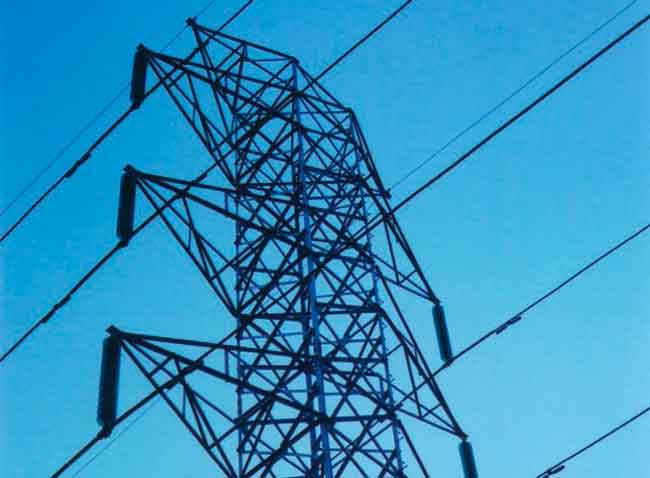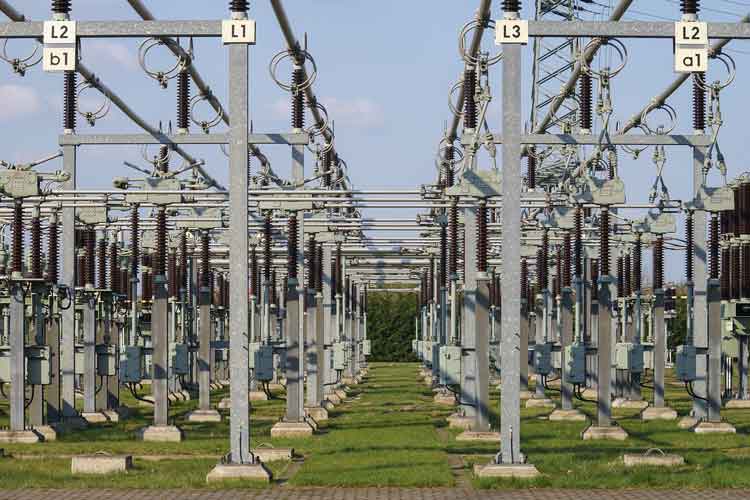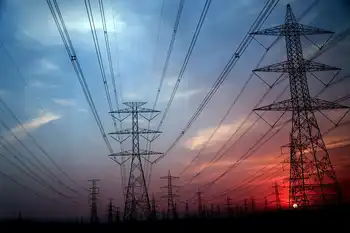The third form of ocean power
The U.S. Department of Energy DOE has given Lockheed Martin two grants totaling $1 million to begin to look at ways to generate electricity from the clash that occurs when chilly water from 2,000 feet below the ocean surface comes in contact with surface water.
With a sufficient temperature difference ~40° F between the warm upper layer and the cold deep water, net power power generated after subtracting the power needed to run the system can be produced. Some semiconductor startups perform a similar trick on land with the Seebeck Effect, i.e., generating power from the temperature difference between a steam pipe and the outside air. At MIT, some scientists even hope to harvest power, via the Seebeck Effect, through body heat. Armpits wont replace nuclear plants but it could possibly replenish batteries.
Many attempts have been made to develop and refine OTEC technology. In 1881, Jacques Arsene dArsonval from France — the 19thcentury birthplace of greentech — proposed tapping the thermal energy of the ocean. His student, Georges Claude, built the first OTEC plant in Cuba in 1930. The system generated 22 KW of electricity via a lowpressure turbine.
Five years later, Claude built another plant aboard a 10,000ton cargo vessel moored off Brazil. Weather and waves destroyed both plants before they could become net power generators.
The United States became involved in OTEC research in 1974, when the Natural Energy Laboratory of Hawaii Authority was established at Keahole Point on Hawaiis Kona coast. The laboratory has become one of the worlds leading test facilities for OTEC technology. Hawaii is often said to be the best U.S. location for OTEC, due to the warm surface water, excellent access to very deep, very cold water, and because Hawaii has the highest electricity costs in the United States. Puerto Rico is also named as a possible site for OTEC endeavors.
Lockheed Martins experience with OTEC technology dates back to 1979, when the company built MiniOTEC. This early prototype remains the worlds only floating OTEC system to generate power beyond what is required for sustaining itself.
MiniOTEC was a threemonth demonstration. The plant, built in Hawaii, is not there anymore. The results were good. An OTEC plant must generate enough power to operate itself, explained Dennis Cooper, OTEC Program Manager at Lockheed Martin.
Since then, Lockheed Martin has continued to mature and validate the critical technologies necessary for an OTEC system that could generate a utilityscale power supply.
Sea Waterbased Air Conditioning SWAC, which uses cold seawater near coastlines to supply airconditioner coolant, could significantly reduce electric utility loads during high summer demand periods. In contrast to OTEC, SWAC is a proven technology currently used in Hawaii, Stockholm and Ottawa, but how big or how far it could go, of course, remain open questions.
Is OTEC more than a promise? Thats the milliondollar question, says Robert Varley, OTEC Capture Manager at Lockheed Martin. Technologically it has been demonstrated, but not at commercial scales. Because the initial plan is very expensive, you must build OTEC at large scale to make it costcompetitive. And these large sizes have not been demonstrated.
Three types of basic OTEC processes exist: closedcycle, opencycle, and hybridcycle. Some numbers indicate that an OTEC plant could cost $150250 million.
Lockheed Martin is looking to install a pilot plant in the range of 510 MW to demonstrate the integration of the complete system and help to understand the economics, the risks and the total performance, Cooper said.
But first, Lockheed Martin will invest the initial grant funds to develop a tool to estimate how much energy can be extracted from the oceans thermal layers. A Geographic Information System GISbased dataset and software tool will be developed to allow users to estimate the potential power or cooling available from a region of the ocean.
The resulting resource mapping will provide critical information to policymakers, the energy industry and the public about regional OTEC and SWAC feasibility.
In cooperation with two universities — Florida Atlantic University and the University of Hawaii — Lockheed Martin will develop the GIS tool that can define the better spots of the ocean and return to users an estimate of the megawatts that can be produced in that area.
This information would let decisionmakers evaluate the future of OTEC in that location. The database will produce maps to be placed at the National Renewable Energy Laboratory NREL in Colorado. NREL will validate the results.
Estimating power generation from local ocean regions would help people appreciate and realize the size of the resource and its value to the local community. Also, mapping the sea would help to qualify the resource, beyond what we know today. So, if OTEC is OK, we have to probe. This tool would help us do it, Cooper said.
Lockheed Martin is not alone on this research. Countries like France, Sweden, Tahiti, Taiwan and Japan are also doing their best.
Ever since Claude first explored the concept in the late 1880s, the ocean had generated a lot of ideas as an energy generator. Wave and tidal energy are also being investigated intensively. But how much potential is out there is unknown. According to different studies, the oceans offer a large range of potential from very little to practically infinite.
From some studies we have seen, OTEC could deliver 35 terawatts. Five TW would be about 30 of global energy consumption. We believe that this is a conservative number. We think it is more than that, Cooper added with optimism. The estimates of potential tidal and wave power globally are higher, but like OTEC, those forms of energy remain in the development stage, as well.
The flow of water output from a 100megawatt OTEC plant would equal a large river. Since ocean salinity is nearly uniform throughout the world, these large discharges will not significantly affect the salinity of the receiving waters. The temperatures of the seawater discharges will be about 6° F above or below their initial temperatures. If the warm and cold discharges are mixed, they will have a temperature near 64° F.
The water will need to be discharged below the bottom of the surface layer, to avoid contaminating the surface water intake. At that depth, i.e., deeper than 300 feet, the discharge will be denser than the water and will disperse gradually downward, having little impact on the surface layer where most life exists.
Anything done in the ocean will have an impact and the OTEC process moves a lot of water. We must, beyond everything else, prevent damage to the environment, Cooper emphasized.
Related News

Reload.Land 2025: Berlin's Premier Electric Motorcycle Festival Returns
BERLIN - Reload.Land, Europe's pioneering festival dedicated to electric motorcycles, is set to return for its third edition on June 7–8, 2025. Held at the Napoleon Komplex in Berlin, this event promises to be a significant gathering for enthusiasts, innovators, and industry leaders in the realm of electric mobility.
A Hub for Electric Mobility Enthusiasts
Reload.Land serves as a platform for showcasing the latest advancements in electric two-wheelers, including motorcycles, e-scooters, and custom electric bikes. Attendees will have the opportunity to test ride a diverse selection of electric vehicles from various manufacturers, providing firsthand experience of the evolving landscape of…





